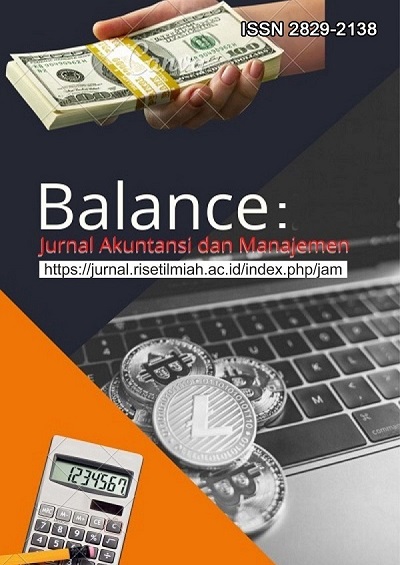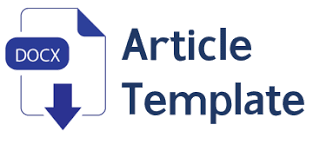Systematic Literature Review: Analisis Kontemporer Transfer Pricing dan Implikasi Perpajakan Global
DOI:
https://doi.org/10.59086/jam.v4i1.665Keywords:
Transfer Pricing, OECD Guidelines , BEPS Action Plan , Tax Avoidance , Global Tax RegulationsAbstract
This study aims to analyze the transfer pricing strategies of multinational enterprises and their implications for global tax policy. Using a Systematic Literature Review (SLR) approach, the research reviews 24 articles from reputable academic databases to provide a comprehensive understanding of contemporary transfer pricing practices. The results show that the application of the OECD Guidelines and the BEPS (Base Erosion and Profit Shifting) Action Plan varies widely across countries. European Union member states tend to enforce stricter and more uniform regulations compared to other regions. The key factors influencing transfer pricing include taxation, firm size, leverage, tunneling incentives, and corporate governance. While tax minimization is a primary driver, the significance of other factors depends on company characteristics and local regulatory environments. The findings highlight the urgent need for harmonized global regulations to close gaps and ensure fair taxation. Future studies are encouraged to develop adaptive transfer pricing models that reflect dynamic global economic conditions and evolving fiscal policies to enhance compliance and minimize tax avoidance risks.
Downloads
References
Al Essawi, M. S., & Brezeanu, P. (2011). The diversity of corporate governance models. Annals of the University of Petroşani, Economics, 11(2), 5-14.
Anggraeni, N., & Lutfillah, N. Q. (2019). Determinants of transfer pricing. Journal of Management and Business, 18(2), 46-55. https://doi.org/10.24123/jmb.v18i2.428
Challoumis, C. (2019). Transfer pricing methods for services and the policy of fixed length principle. Economics and Business, 33, 222–232. https://doi.org/10.2478/eb-2019-0016
Clempner, J. B., & Poznyak, A. S. (2017). Negotiating transfer pricing using the Nash bargaining solution. International Journal of Applied Mathematics and Computer Science, 27(4), 853–864. https://doi.org/10.1515/amcs-2017-0060
Cristea, A. D., & Nguyen, D. X. (2016). Transfer pricing by multinational firms: New evidence from foreign firm ownerships. American Economic Journal: Economic Policy, 8(3), 170-202. https://doi.org/10.1257/pol.20130407
DiMaggio, P. J., & Powell, W. W. (1983). The iron cage revisited: Institutional isomorphism and collective rationality in organizational fields. American Sociological Review, 48(2), 147–160. https://doi.org/10.2307/2095101
Gjorgieva-Trajkovska, O., Svrtinov, V. G., Dimitrova, J., & Koleva, B. (2021). Transfer pricing – Definition and methods. Knowledge – International Journal, 35(1), 167-182.
Huda, M. K., Nugraheni, N., & Kamarudin, K. (2017). The problem of transfer pricing in Indonesia taxation system. International Journal of Economics and Financial Issues, 7(4), 139-143.
Isthika, W., Aryani, Y. A., & Setiawan, D. (2024). Transfer pricing in Indonesia: Literature analysis. Media Riset Akuntansi, Auditing & Informasi, 24(2), 175-192. https://doi.org/10.25105/mraai.v24i2.18727
Jensen, M. C., & Meckling, W. H. (1976). Theory of the firm: Managerial behavior, agency costs and ownership structure. Journal of Financial Economics, 3(4), 305–360. https://doi.org/10.1016/0304-405X(76)90026-X
Korol, S. Y., Nykyforuk, O. I., Pelekh, U. V., Barabash, N. S., & Romashko, O. M. (2022). Transfer pricing documentation: Globalization and regional optimization. Universal Journal of Accounting and Finance, 10(1), 219-230. https://doi.org/10.13189/ujaf.2022.100123
Martini, J. T. (2011). Transfer pricing for coordination and profit allocation. Australian Journal of Business and Management Research, 1(6), 7-26.
McGee, R. W. (2010). Ethical issues in transfer pricing. Manchester Journal of International Economic Law, 7(2), 24-41.
Nguyen, H. N., Tham, J., Khatibi, A., & Azam, S. M. F. (2020). Conceptualizing the effects of transfer pricing law on transfer pricing decision making of FDI enterprises in Vietnam. International Journal of Data and Network Science, 4, 187–198. https://doi.org/10.5267/j.ijdns.2020.6.002
Nguyen, T. X. (2016). A review of transfer pricing: From domestic to international transfer pricing. International Journal of Business, Economics and Law, 10(3), 18-28.
Nurjannah, Yunus, M. H., Renaldi, M., Munawir, R., & Asaff, R. (2022). Factor supporting companies performing transfer pricing. Jurnal Akuntansi, 26(1), 76-91. https://doi.org/10.24912/ja.v26i1.818
Ondrušová, L. (2016). Management decisions in transfer pricing. Strategic Management, 21(1), 3-7.
Otley, D. T. (1980). The contingency theory of management accounting: Achievement and prognosis. Accounting, Organizations and Society, 5(4), 413–428. https://doi.org/10.1016/0361-3682(80)90040-9
Padhi, S. K. (2019). Transfer pricing: A review of literature. International Journal of Advanced Research in Management, 10(1), 1-7.
Pendse, S. J. (2012). International transfer pricing: A review of non-tax outlook. Procedia - Social and Behavioral Sciences, 37, 337–343. https://doi.org/10.1016/j.sbspro.2012.03.298
Perčević, H., & Hladika, M. (2017). Application of transfer pricing methods in related companies in Croatia. Economic Research-Ekonomska Istraživanja, 30(1), 611-623. https://doi.org/10.1080/1331677X.2017.1305780
Rossing, C. P., Cools, M., & Rohde, C. (2017). International transfer pricing in multinational enterprises. Journal of Accounting Education. https://doi.org/10.1016/j.jaccedu.2017.06.001
Solilová, V. (2010). Transfer pricing rules in EU member states. ACTA Universitatis Agriculturae et Silviculturae Mendelianae Brunensis, 58(3). https://doi.org/10.11118/actaun201058030157
Susanti, A., & Firmansyah, A. (2018). Determinants of transfer pricing decisions in Indonesian manufacturing companies. Jurnal Akuntansi dan Auditing Indonesia, 22(2), 141-160. https://doi.org/10.20885/jaai.vol22.iss2.art1
Uyar, M. (2014). A study on accounting of transfer pricing and its effect on taxation. Accounting and Finance Research, 3(1), 79. https://doi.org/10.5430/afr.v3n1p79
Waworuntu, S. R., & Hadisaputra, R. (2016). Determinants of transfer pricing aggressiveness in Indonesia. Pertanika Journal of Social Sciences & Humanities, 24(S), 95-110.
Wu, Z., & Lu, X. (2018). The effect of transfer pricing strategies on optimal control policies for a tax-efficient supply chain. Omega, 80, 209-219. https://doi.org/10.1016/j.omega.2018.03.003
Downloads
Published
How to Cite
Issue
Section
License
Copyright (c) 2025 Berlika Sharla Martiza, Luk Luk Fuadah

This work is licensed under a Creative Commons Attribution 4.0 International License.
This is an open-access journal. All works are published under the Creative Commons license CC-BY which means that all content is freely available at no charge to the user or his/her Institution. Users are allowed to read, download, copy, write, improve, and create derivative creation even for other lawful purposes, this license permits anyone to, as long as they cite and license the derivative creation under similar terms

This work is licensed under a Creative Commons Attribution 4.0 International License.
Most read articles by the same author(s)
- Tyas Prasetyawati, Luk Luk Fuadah, Tax Avoidance Analisis Trend dan Faktor: Melalui Pendekatan Systematic Literature Review , Balance : Jurnal Akuntansi dan Manajemen: Vol. 4 No. 1 (2025): April 2025
- Rizki Agung Santoso, Luk Luk Fuadah, Systematic Literature Review: The Impact of Profitability, Leverage, and Taxation on Transfer Pricing in Companies , Balance : Jurnal Akuntansi dan Manajemen: Vol. 4 No. 1 (2025): April 2025


















